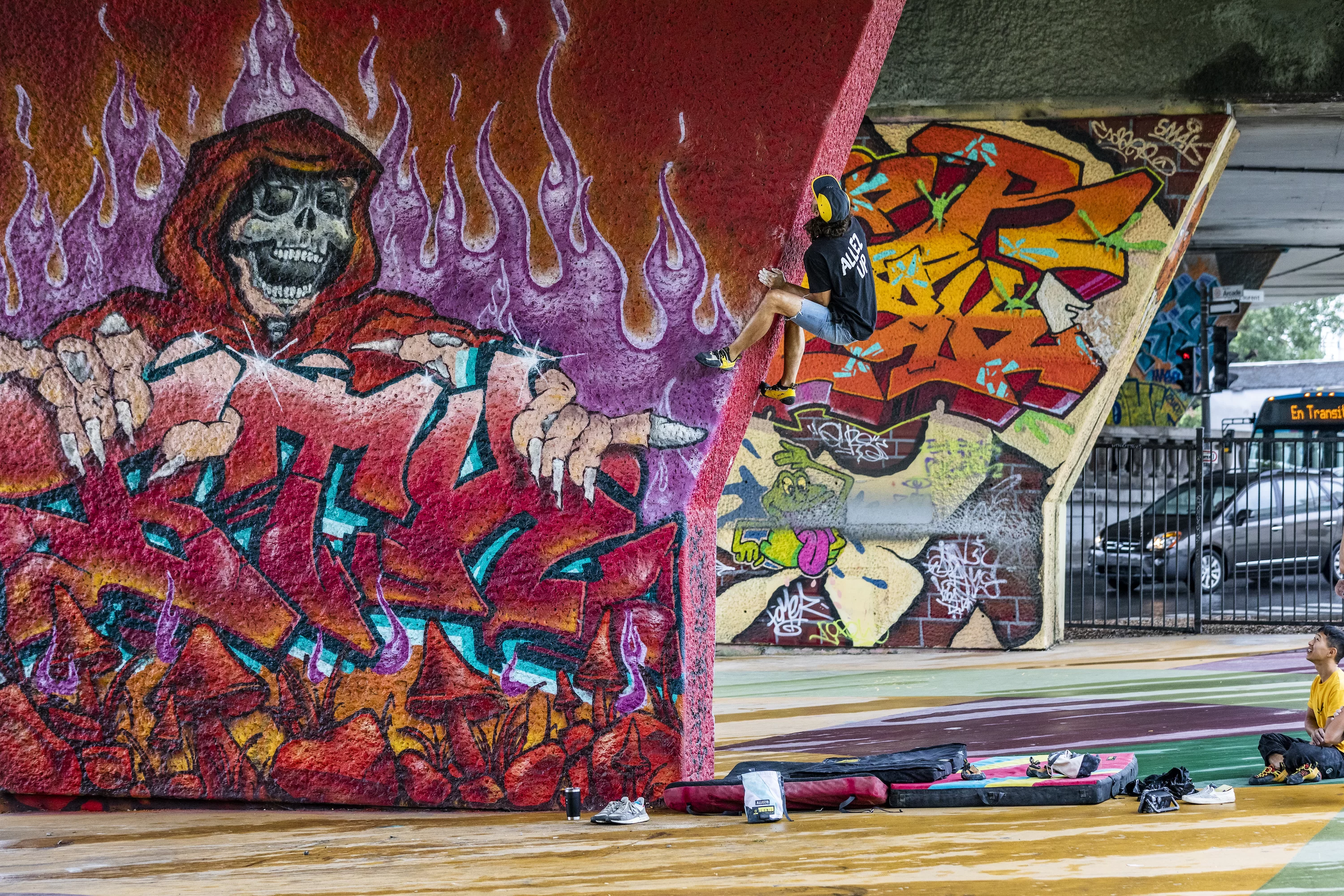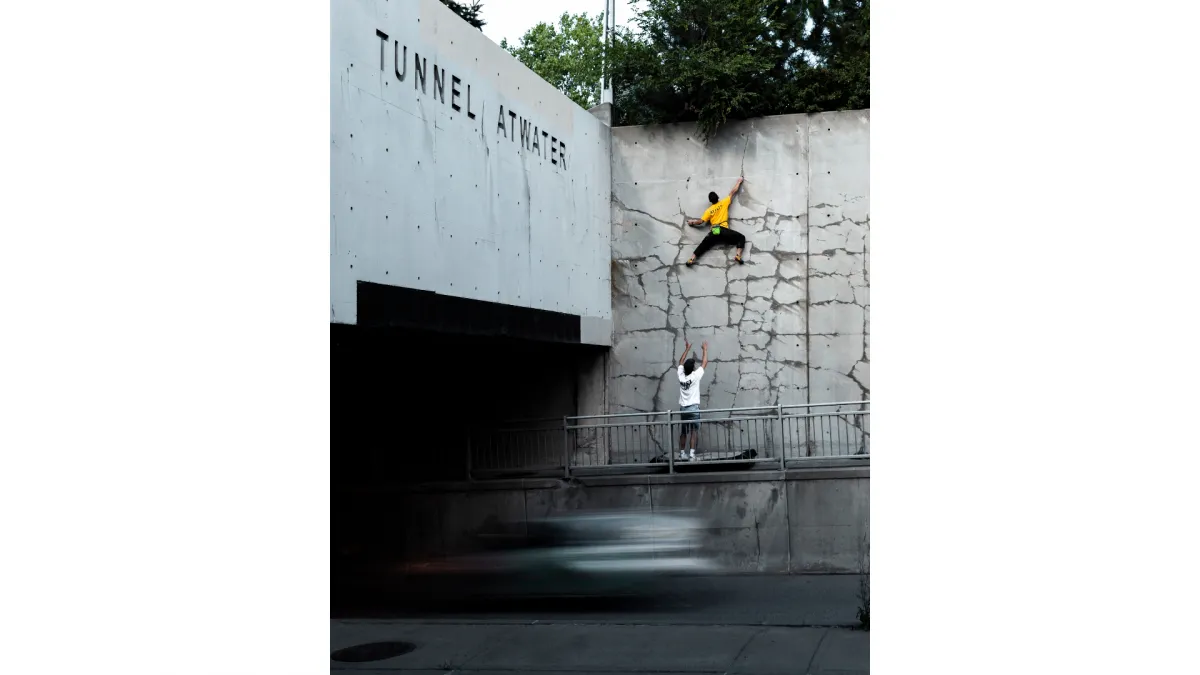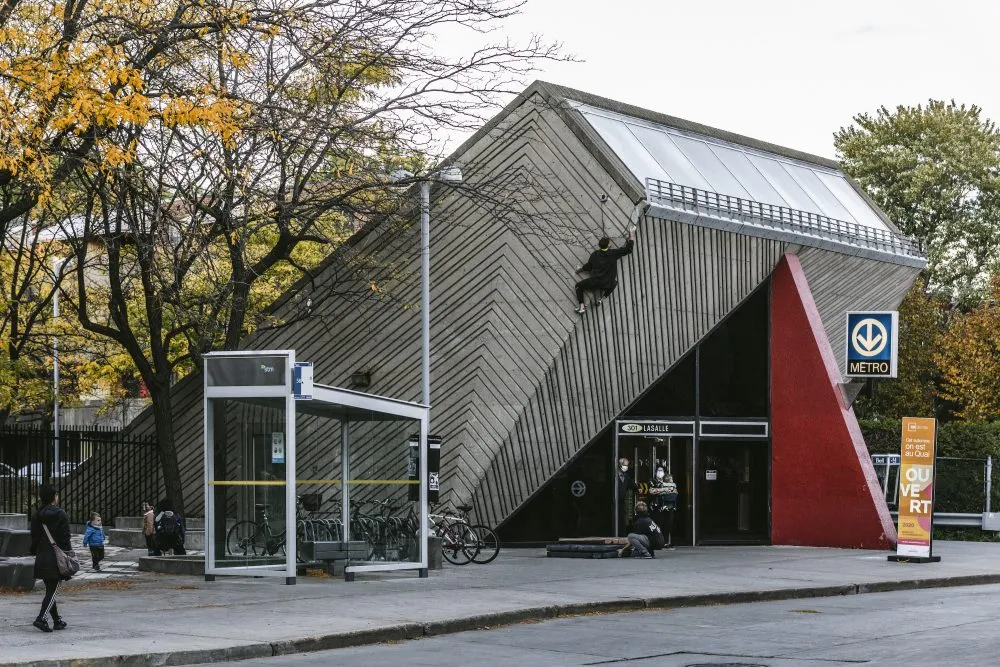
DISTURBAN : Reclaiming Montreal
December 3, 2020 / By nicolas

Athlete : Jay Jeong
Credit : Mathieu Tranchida
“There’s not a time when I go through the Atwater Tunnel that I don’t remember when we climbed it,” says Antoine. ‘’ When I pass in front of the Lasalle metro, I see it as a climbing boulder. Urban architecture is very geometric and linear and it allows us to see potential lines to climb.”
With this in mind, Antoine and his climbing partners, Marc-Antoine Vigneault, Zoe Beauchemin, Jay Jeong and Bea Evans, returned to conquer Montreal’s urban architecture. Bridges, buildings, subway stations, they pushed back the limits they had set for themselves in 2005 as part of this new series.
Like skaters, climbers tend to look at urban architecture from a different perspective. What may be just a staircase for a normal person will be seen as a set of 8 steps with a handrail to grind on by a skater. In climbing, it’s the same thing.
But the parallel between these two marginal sports does not stop there.
” If you’re going to do urban climbing, it won’t be long before you’re going to have a hard time. It’s like skateboarding… the security will come, the owner will be angry, the police will come… we’ve been taken out of spots very often. It’s not that much fun.”
Not only can it be a complicated activity because of prohibitions, urban climbing can be very dangerous. It is not for beginners, nor for those who are afraid of heights.
“People are used to climbing in gyms with big mattresses and walls no higher than 15 feet. When you go outside, you have to calculate your risk. You can’t be as reckless when you climb on an urban structure as when you climb in a gym, because outside, the fall is real,” concludes Antoine.
Inspired ? Stay tuned here and here for more !
